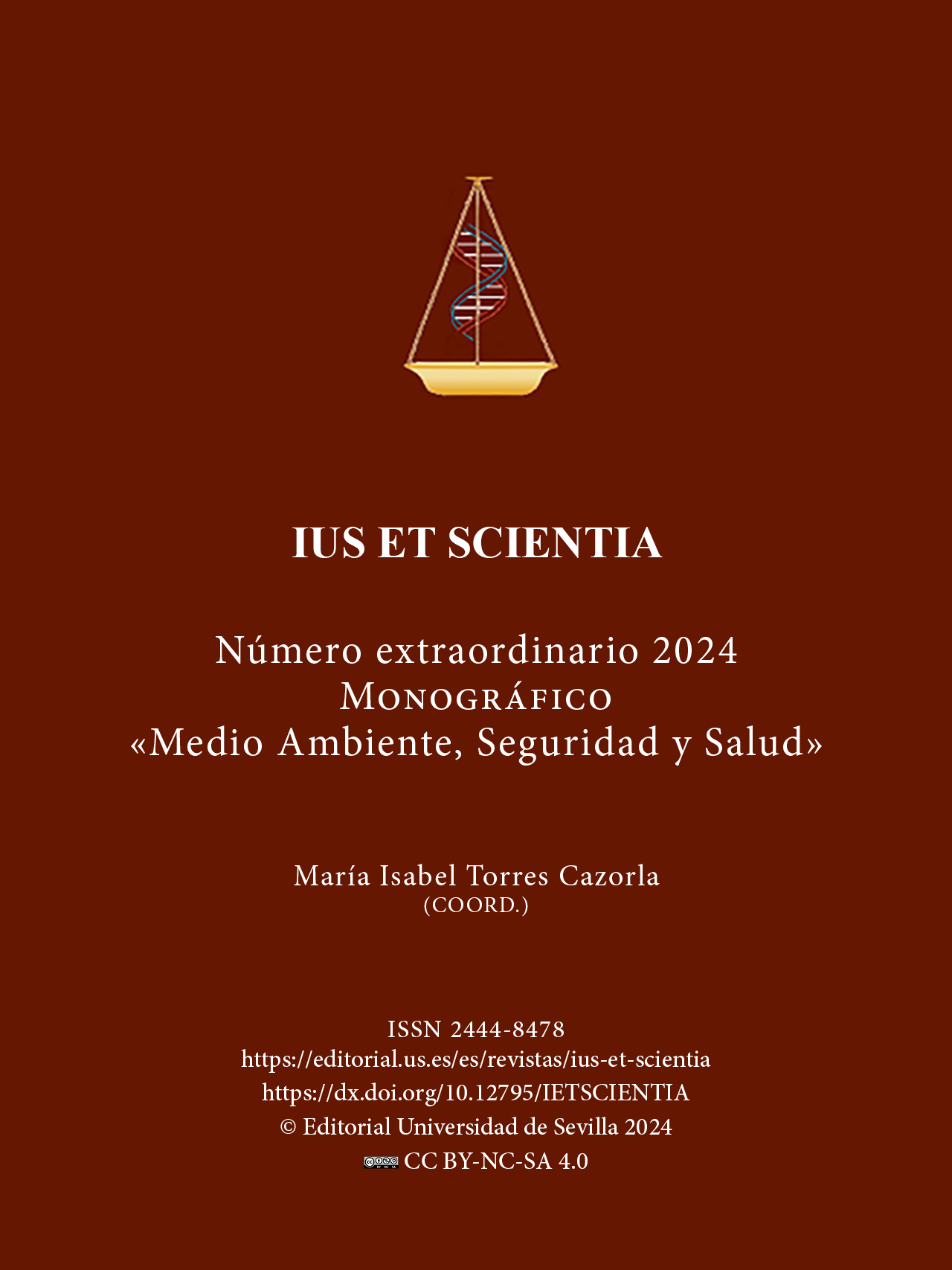Los niños y jóvenes como litigantes climáticos ante el Tribunal Europeo de Derechos Humanos: el caso Duarte Agostinho
DOI:
https://doi.org/10.12795/IESTSCIENTIA.2024.mon.02Palabras clave:
Litigio climático, Derechos humanos, Derechos del niño, Justicia climática, Tribunal Europeo de Derechos HumanosResumen
La litigación climática estratégica basada en derechos humanos se está convirtiendo en una herramienta muy utilizada para exigir a los Estados que cumplan con sus compromisos climáticos. Asimismo, un buen número de estos casos está liderado por niños o jóvenes que han interpuesto las correspondientes demandas climáticas tanto ante jurisdicciones nacionales como ante instancias internacionales. Uno de ellos es el caso Duarte Agostinho, en el que seis niños y jóvenes portugueses han demandado a 33 Estados ante el Tribunal Europeo de Derechos Humanos. El presente artículo examina los argumentos planteados por el caso Duarte Agostinho en relación con el respeto y protección de los derechos humanos y el cambio climático en la demanda y en la posterior vista oral del caso, y explora cómo la posición final que adopte el tribunal podría contribuir a la consecución de la justicia climática.
Descargas
Citas
ABRISKETA URIARTE, J. (2012), «Los problemas del Tribunal Europeo de Derechos Humanos para aplicar el Derecho internacional humanitario», Revista de Derecho Comunitario Europeo, núm. 43.
ARTS, K. (2019). «Children’s Rights and Climate Change», en Children’s Rights and Sustainable Development: Interpreting the UNCRC for Future Generations, Fenton-Lynn, Claire (ed.) , Ed. Cambridge University Press.
BRAIG, K. y PANOV, S. (2020) «The Doctrine of Positive Obligations as a Starting Point for Climate Litigation in Strasbourg: The European Court of Human Rights as a Hilfssheriff in Combating Climate Change?», Journal of Environmental Law and Litigation, núm.35.
DONGER, E. (2022) «Children and Youth in Strategic Climate Litigation: Advancing rights through Legal Arguments and Legal Mobilization», Transnational Environmental Law, núm.11.
FAJARDO DEL CASTILLO, T. (2018) «El Acuerdo de París sobre el Cambio Climático», Revista Española de Derecho Internacional, núm.70.
GALVAO, P. (2020) «Derechos Humanos y Cambio Climático. Un desafío para el Siglo XXI», Anuario de los Cursos de Derechos Humanos de Donostia-San Sebastián, núm.20.
GARCÍA MARTÍN, L. (2024), Litigación climática liderada por niños y jóvenes: análisis de su contribución a la acción climática global. Ed. Aranzadi.
GIBBONS, E. (2014) «Climate change, children’s rights, and the pursuit of intergenerational climate justice», Health and Human Rights Journal, núm. 16.
IPCC, Sexto Informe de Evaluación del Panel Intergubernamental sobre el Cambio Climático 2023.
KELLER, H. y HERI, C. (2022) «The Future is Now: Climate Cases Before the ECtHR», Nordic Journal of Human Rights, núm.40.
KELLER, H., HERI, C. y PISKÓTY, R. (2022) «Something Ventured, Nothing Gained? - Remedies before the ECtHR and Their Potential for Climate Change Cases», Human Rights Law Review, núm.22.
KOBYLARZ, N. (2018) «The European Court of Human Rights: An Underrated Forum for Environmental Litigation» en Sustainable Management of Natural Resources: Legal Instruments and Approaches, Tegner Anker, Heller y Egelund Olsen, Birgitte (eds.), Ed. Intersentia.
LEWIS, B. (2021) «The potential of international rights-based climate litigation to advance human rights law and climate justice», Griffith Journal of Law & Human Dignity, núm.9.
LISTON, G. y KINGSLEY CLARK, P. (2023) «Climate Litigation before International Tribunals» en Litigating the Climate Emergency. How Human Rights Courts and Legal Mobilization can bolster Climate Action, Rodríguez-Garavito, César (ed.) Ed. Cambridge University Press.
MAGUIRE, R. y LEWIS, B. (2012) «The influence of justice theories on international climate policies and measures» Macquarie Journal of International and Comparative Environmental Law, núm. 8.
MAVRONICOLA, N. (2021) «The Future is a Foreign Country: Rethinking State Behaviour on Climate Change as Ill-Treatment», University of Birmingham New Approaches, núm.1.
MCINTYRE, O. y MOSEDALE, T. (1997) «The precautionary principle as a norm of customary international law», Journal of Environmental Law, núm. 9.
MILANOVIC, M. (2024, Abril 9) «A Quick Take on the European Court’s Climate Change Judgments», EJIL:Talk!.
NOLLKAEMPER, A. (2018) «The Duality of Shared Responsibility», Contemporary Politics, núm.24.
PARKER, L., MESTRE, J, JODOIN, S. y WEWERINKE-SINGH, M. (2022) «When the kids put climate change on trial: youth-focused rights-based climate litigation around the World», Journal of Human Rights and Environment, núm.64.
RODRÍGUEZ-GARAVITO, C. (2023), «Litigating the Climate Emergency: The Global Rise of Human Rights-Based Litigation for Climate Action» en Litigating the Climate Emergency. How Human Rights Courts and Legal Mobilization can bolster Climate Action, Rodríguez-Garavito, César (ed.), Ed. Cambridge University Press.
ROSEMARY L. (2017), «Climate Justice, Adaptation and the Paris Agreement: A Recipe for Disasters?», Environmental Politics, núm.26.
SPIELMANN, D. (2012) «Allowing the Right Margin: The European Court of Human Rights and The National Margin of Appreciation Doctrine: Waiver or Subsidiarity of European Review?», Cambridge Yearbook of European Legal Studies, núm.14.
TURCO, M., JEREZ, S., AUGUSTO, S., TARÍN-CARRASCO, P., RATOLA, N., JIMÉNEZ-GUERRERO, P. & TRIGO, R. (2019) «Climate Drivers of the 2017 Devastating Fires in Portugal», Scientific Reports, núm. 9.
Publicado
Cómo citar
Número
Sección
Licencia
Derechos de autor 2024 Laura García Martín

Esta obra está bajo una licencia internacional Creative Commons Atribución-NoComercial-CompartirIgual 4.0.
Aquellos autores/as que tengan publicaciones con esta revista, aceptan los términos siguientes:- Los autores/as conservarán sus derechos de autor y garantizarán a la revista el derecho de primera publicación de su obra, el cuál estará simultáneamente sujeto a la Licencia de reconocimiento de Creative Commons que permite a terceros compartir la obra siempre que se indique su autor y su primera publicación esta revista.
- Los autores/as podrán adoptar otros acuerdos de licencia no exclusiva de distribución de la versión de la obra publicada (p. ej.: depositarla en un archivo telemático institucional o publicarla en un volumen monográfico) siempre que se indique la publicación inicial en esta revista.
- Se permite y recomienda a los autores/as difundir su obra a través de Internet (p. ej.: en archivos telemáticos institucionales o en su página web) antes y durante el proceso de envío, lo cual puede producir intercambios interesantes y aumentar las citas de la obra publicada. (Véase El efecto del acceso abierto).




